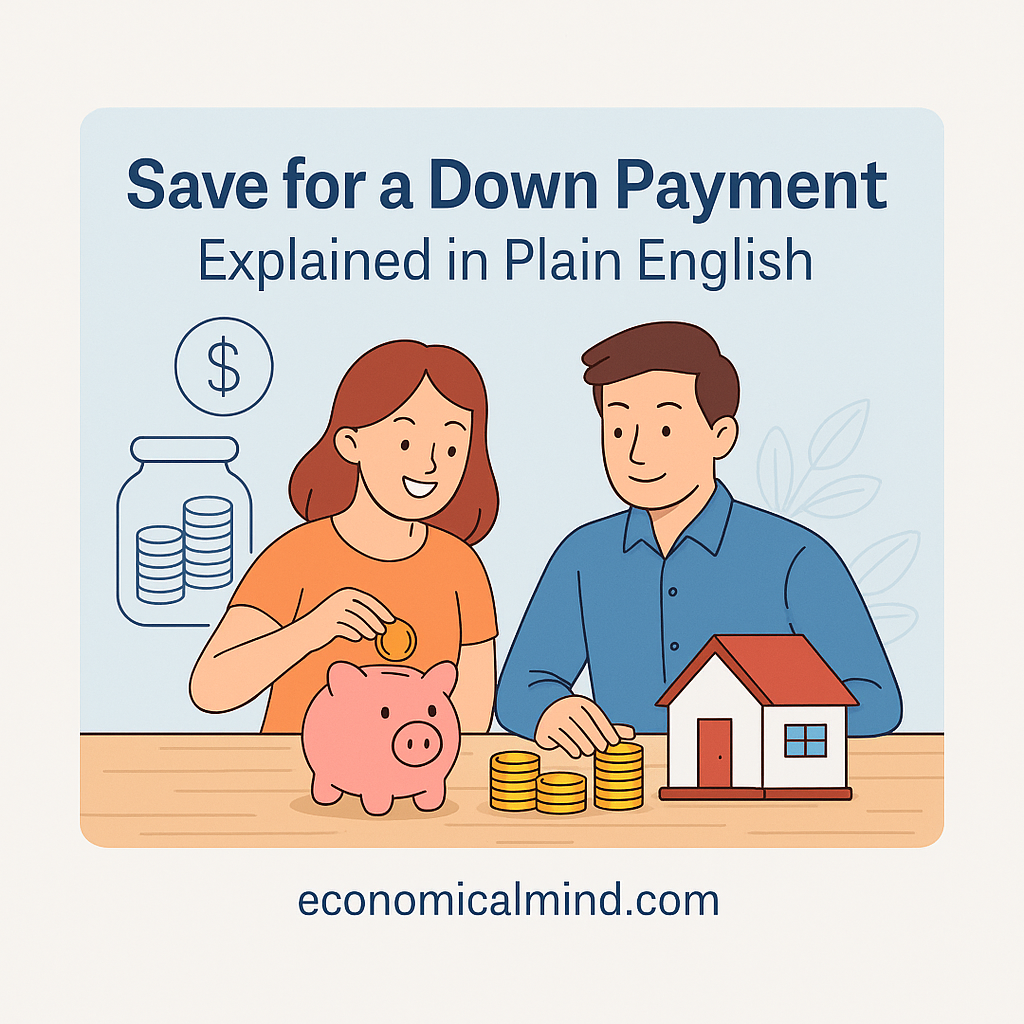
Buying a home is one of the biggest financial milestones you’ll ever reach — and saving for a down payment is often the hardest part. But it doesn’t have to be complicated. By understanding how down payments work and following a clear savings plan, you can move toward homeownership with confidence.
Here’s how to save for a down payment — explained simply, step by step.
Step 1: Know What a Down Payment Is
A down payment is the money you pay upfront when buying a home. It’s a percentage of the total home price, and the rest is covered by your mortgage.
For example:
- If you buy a $300,000 home and put 10% down, you’ll need $30,000 upfront.
- The remaining $270,000 will be your mortgage loan.
The more you put down, the less you’ll need to borrow — and the lower your monthly payments will be.
Step 2: Figure Out How Much You Need
How much you should save depends on your goals and loan type.
Common down payment guidelines:
- Conventional loan: 3–20%
- FHA loan: 3.5% (great for first-time buyers)
- VA or USDA loans: 0% down (for eligible borrowers)
Don’t forget about closing costs, which usually add another 2–5% of the home’s price.
To estimate your target amount:
- Choose your price range.
- Multiply by your desired percentage.
- Add extra for closing costs and moving expenses.
Step 3: Create a Separate Savings Account
One of the easiest ways to save effectively is to separate your down payment funds from your regular checking account.
Open a high-yield savings account (HYSA) so your money earns interest while you save.
This keeps your down payment safe, growing, and out of reach for impulse spending.
Step 4: Automate Your Savings
Consistency is key. Automate a transfer each payday into your down payment account — even if it’s just $100 or $200 at a time.
Think of it like paying a “future rent” to yourself. Over time, these automatic transfers add up faster than you expect.
If you receive bonuses, tax refunds, or side income, send a portion directly into your home fund.
Step 5: Cut Costs Strategically
You don’t need to give up everything to save — just make a few intentional changes.
Try:
- Cooking at home instead of eating out
- Canceling unused subscriptions
- Refinancing high-interest debt to free up cash
- Shopping secondhand or waiting for sales
Every saved dollar gets you closer to your goal. Use budgeting apps like YNAB, Rocket Money, or Mint to track progress.
Step 6: Boost Your Income (If Possible)
Increasing your income can help you reach your down payment goal faster.
Consider:
- Freelancing or part-time work
- Selling unused items online
- Asking for a raise or promotion
- Starting a small side hustle
Even a few hundred extra dollars a month can shave months off your savings timeline.
Step 7: Keep Your Credit Strong
While you’re saving, make sure your credit score stays healthy — lenders use it to determine your mortgage rate.
You can do this by:
- Paying bills on time
- Keeping credit card balances below 30% of their limits
- Avoiding new debt unless necessary
A better credit score can lower your interest rate, saving you thousands over your loan’s lifetime.
Bonus Tip: Explore Down Payment Assistance Programs
If saving feels overwhelming, research first-time homebuyer assistance programs.
Many states, cities, and credit unions offer grants or low-interest loans to help cover down payments and closing costs.
These programs can make homeownership possible even sooner.
Final Thoughts
Saving for a down payment takes patience, but it’s completely doable with the right plan.
By separating your savings, automating deposits, and making small lifestyle adjustments, you’ll turn a big goal into manageable steps.
Remember: every dollar saved isn’t just money — it’s progress toward your dream of owning a home.
